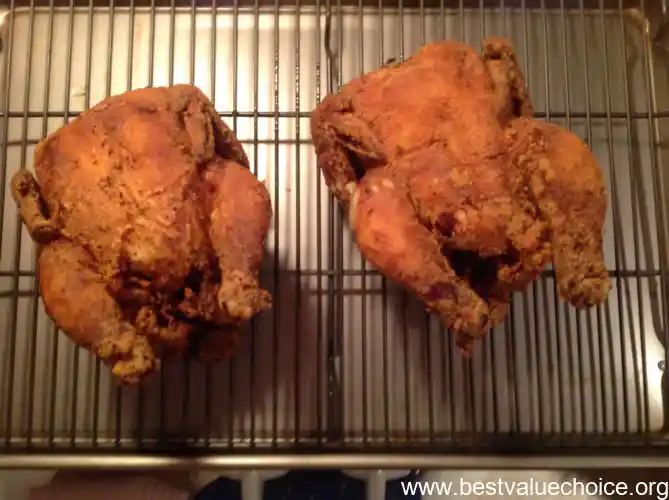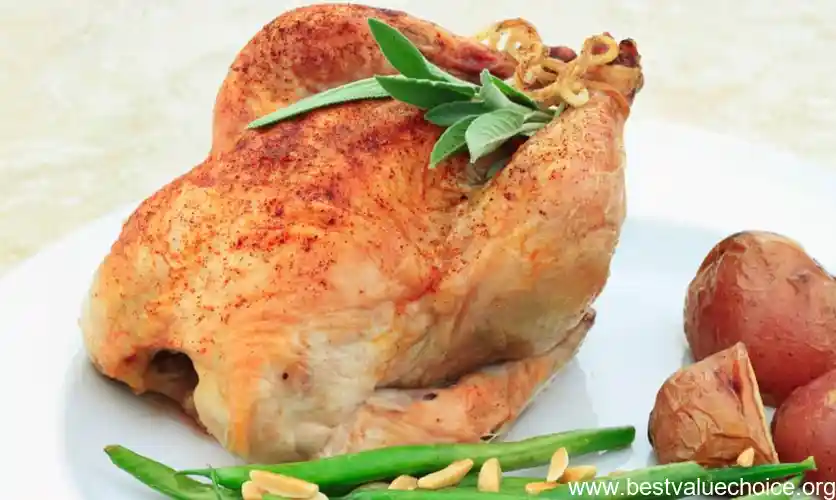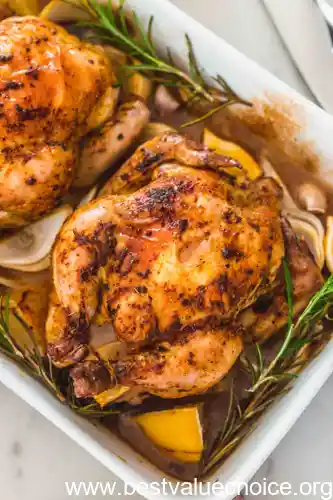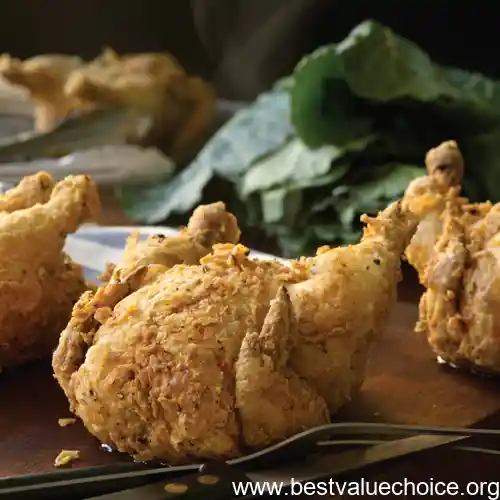Embark on a culinary voyage as we delve into the art of frying Cornish hens, elevating your home cooking to new heights. As we navigate this gastronomic journey together, you’ll discover the nuances of preparing these delectable birds, mastering techniques for achieving crispy skin and tender meat that will melt in your mouth. We’ll explore flavorful marinades and seasonings, empowering you to create bespoke blends that will tantalize your taste buds. Our focus on essential equipment and tools will ensure you have the tools to succeed, while practical tips on timing and troubleshooting will guide you every step of the way. Join us as we unlock the secrets of frying Cornish hens, transforming your kitchen into a culinary haven. Prepare to embark on a journey that will leave your taste buds craving more with every bite.
The Art of Perfecting Cornish Hen: A Journey to Culinary Excellence

Embark on a culinary expedition as we delve into the art of perfecting Cornish hen, a delectable delicacy renowned for its crispy skin and succulent meat. This journey will empower you with the knowledge and techniques to transform ordinary ingredients into an extraordinary dish. Prepare to explore the nuances of Cornish hen preparation, mastering the sear, roast, and finish to achieve culinary excellence. We’ll uncover the secrets of flavorful marinades and seasonings, crafting irresistible blends of herbs, spices, and aromatics to elevate the Cornish hen experience. We’ll also equip you with essential equipment and tools, ensuring you have everything you need to embark on your culinary adventure. Together, we’ll uncover the practical tips for timing and troubleshooting, empowering you to achieve perfection with every Cornish hen you prepare. Join us on this tantalizing journey as we unravel the secrets of Cornish hen mastery, transforming your culinary skills and delighting your taste buds with every bite.
Understanding the Nuances of Cornish Hen Preparation
The journey to mastering the perfect Cornish hen is not just about following a recipe blindly; it’s about understanding the nuances that elevate this dish from ordinary to extraordinary. Just like an artist who carefully selects each brushstroke to create a masterpiece, you too must approach the preparation of Cornish hen with a discerning eye. Understanding the intricacies of the meat, the significance of temperature control, and the alchemy of flavors is essential. Let’s embark on a culinary adventure together, where we’ll explore the secrets of preparing Cornish hen that will tantalize your taste buds and leave you craving for more.
Techniques for Achieving Crispy Skin and Tender Meat

To achieve the coveted crispy skin and tender meat, we’ll embark on a culinary expedition. First, we’ll master the sear, a technique that locks in flavor and creates a golden-brown crust. This is best accomplished by using a cast-iron skillet or grill pan over high heat. Secondly, we’ll transition to roasting, allowing the heat to penetrate the meat evenly. Using an oven or convection oven, we’ll carefully monitor the temperature to ensure the Cornish hens reach an internal temperature of 165 degrees Fahrenheit. Finally, we’ll finish with a brief broil or torch sear, adding a touch of smokiness and an irresistible crispness to the skin.
Mastering the Sear, Roast, and Finish
Achieving that perfect balance between crispy skin and succulent meat is an art form that requires finesse and precision. The secret lies in mastering the sear, roast, and finish. Begin by searing the Cornish hen on high heat to create a golden-brown exterior that locks in the juices. Then, roast it at a lower temperature to gently cook the meat through without drying it out. Finally, finish it off with a quick blast of high heat to crisp up the skin. By following these steps, you’ll transform your Cornish hen into a culinary masterpiece that will impress your taste buds and leave you craving for more.
Flavorful Marinades and Seasonings: Elevating the Cornish Hen Experience

Embark on a culinary expedition to elevate your Cornish hen experience with flavorful marinades and seasonings. These magical elixirs and aromatic blends possess the power to transform your humble bird into a culinary masterpiece. Unleash your inner alchemist and experiment with herbs, spices, and aromatics to create tantalizing concoctions that will dance upon your taste buds. Imagine the symphony of flavors, where rosemary’s woodsy notes serenade you, thyme’s earthy whispers enchant you, and the vibrant zest of lemon awakens your palate. Let your creativity soar as you craft marinades that infuse your Cornish hen with a symphony of flavors that will leave you yearning for more.
Crafting Herbs, Spices, and Aromatics Blends
Step into the enchanting world of flavors as we explore the delectable realm of marinades and seasonings – the secret to elevating your Cornish hen experience to culinary heights. Just as a canvas needs vibrant hues to showcase its masterpiece, your Cornish hen deserves a symphony of flavors to awaken its hidden potential.
Let your imagination soar as you craft a harmonious blend of herbs, spices, and aromatic ingredients. Picture the symphony of flavors dancing upon your taste buds as you experiment with aromatic rosemary, zesty thyme, vibrant paprika, and a touch of piquant saffron. Each ingredient, like a musical note, contributes its unique melody to the overall symphony of flavors.
Remember, the key to a successful marinade lies in finding the perfect balance between complementing flavors without overpowering the delicate taste of the Cornish hen. It’s a culinary dance, where each ingredient plays its part in creating a harmonious ensemble. So, unleash your inner chef, let your creativity flow, and embark on a culinary adventure that will transform your Cornish hen into a masterpiece of taste.
Essential Equipment and Tools: Empowering Your Culinary Adventure

As we voyage into the art of preparing succulent Cornish hens, let’s acknowledge the crucial role played by essential equipment and tools. Picture this: trying to paint a masterpiece with brushes of varying sizes and qualities. Similarly, your culinary adventure demands the right gear. Selecting the appropriate pan is paramount. Opt for a cast iron skillet or a roasting pan that distributes heat evenly, ensuring golden-brown skin and tender meat. A trusty meat thermometer is your ally, allowing you to monitor the internal temperature and avoid overcooking or undercooking your prized bird. Other essential tools include a sharp carving knife for creating precise slices, a kitchen timer to keep track of cooking times, and a pair of tongs for handling the hen with ease. Remember, it’s not just about the ingredients but also about the equipment that empowers your culinary journey.
Selecting the Right Pan, Thermometer, and Other Necessities
As we embark on this culinary adventure, let’s ensure we have the right tools for the job. Just like a painter needs the perfect brushes and canvas, a chef needs the essential equipment to transform Cornish hens into culinary masterpieces. Choosing the right pan, thermometer, and other necessities will empower you to achieve crispy skin and tender meat with confidence. Consider a cast-iron skillet for its ability to evenly distribute heat, creating an irresistible sear. Embrace the precision of a digital thermometer to monitor your hen’s internal temperature, guaranteeing perfect doneness. Remember, it’s not just about the tools but how you use them. By understanding the nuances of your equipment and embracing your inner chef, you’ll unlock the secrets of perfecting Cornish hens and create dishes that will delight your taste buds.
Practical Tips for Timing and Troubleshooting: Ensuring Perfection
When it comes to cooking cornish hens, timing is of the utmost importance. Overcook them, and you’ll end up with dry, tough meat; undercook them, and you risk foodborne illnesses. To ensure perfection, always use a meat thermometer to monitor the internal temperature of the hens. It should reach 165°F (74°C) in the thickest part of the thigh. Allow the hens to rest for 10-15 minutes before carving to allow the juices to redistribute, resulting in more tender and flavorful meat.
Don’t be afraid to troubleshoot if you encounter any issues while cooking. If the skin isn’t crisping up, increase the heat and keep a close eye on it to prevent burning. If the meat is cooking too quickly, reduce the heat or cover the hens with foil to slow down the cooking process. With a little patience and attention to detail, you’ll be able to troubleshoot any issues that arise and ensure perfectly cooked cornish hens every time.
Monitoring Temperature, Resting, and Troubleshooting Common Issues
Timing and troubleshooting are crucial aspects of frying Cornish hens. You must have an accurate thermometer to monitor the internal temperature. Insert it into the thickest part of the thigh without touching any bones. The ideal internal temperature for a fried Cornish hen is 165°F (74°C).
Additionally, it’s a good idea to use a kitchen timer to ensure you don’t overcook the bird. Overcooking will result in dry and tough meat. Once the desired internal temperature is reached, remove the Cornish hen from the oil and let it rest for about 10 minutes before carving. This resting period allows the juices to redistribute, giving you a more succulent bird. Don’t hesitate to troubleshoot if things don’t go as planned.
Q1. What is the best way to fry cornish hens?
Ans: Fry them in a deep fryer at 350 degrees F for 15-18 minutes, or until golden brown.
Q2. How long do you fry cornish hens at 350 degrees F?
Ans: Fry them for 15-18 minutes, or until golden brown.
Q3. Can you fry cornish hens without breading?
Ans: Yes, you can fry them without breading, but they will not be as crispy.
Q4. What is the best oil to fry cornish hens in?
Ans: Vegetable oil or canola oil are both good options.
Q5. How do you know when cornish hens are done frying?
Ans: They are done frying when they are golden brown and the internal temperature reaches 165 degrees F.
Q6. What should I serve with fried cornish hens?
Ans: You can serve them with a variety of sides, such as roasted vegetables, mashed potatoes, or coleslaw.




0 Comments